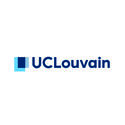In short
Many food industries use flavourings to improve or modify the odour and/or taste of foods. However, flavouring substances are currently poorly monitored while some are suspected genotoxic or prohibited. A new analytical method is necessary to analyse a large number of flavouring substances efficiently. The obtained data is not only used for legislative purposes but can also be used by the European Food Safety Authority (EFSA) to carry out risk assessment, targeting children, a sensitive group among the population.
Project description
New method to analyse flavouring substances
The main objective of this project is to establish a versatile quantitative method to analyse flavouring substances for regulatory purposes. Many analytical techniques are already successfully implemented but generally cover very few compounds and/or few food matrices and are not properly validated. Under these conditions it is very challenging and expensive to control the levels in food, considering the large availability of products on the market. Versatile, high-throughput multi-methods can cover a large number of flavouring substances in one analysis in an easy and more efficient fashion.
Advantages of a versatile strategy
There are 3 main advantages of this versatile strategy:
- the method’s compound-matrix scope can readily be expanded for future research topics
- we can rapidly submit data in response to EFSA specific calls without having to deploy the cumbersome steps of method development and validation procedures
- for routine laboratories, the method is amenable to accreditation under flexible scope.
Method development
To achieve our goal, we implemented and optimized the solvent-assisted flavour evaporation (SAFE) technique to isolate the flavouring substances from the food matrix. This widely-used technique is known for its soft and exhaustive character of extraction and versatility. The selection strategy for the targeted analytes was based on EFSA risks assessments reports, European legislation and compound chemical classes.
Following, gas chromatography coupled to mass spectrometry (GC-MS) was used as the detection technique. It can monitor hundreds of compounds with high selectivity and sensitivity when working in the selective ion monitoring (SIM) mode. Moreover, as the SAFE technique leads to a final liquid extract, a full-scan (FS) acquisition can additionally be performed, valuable for retro-analysis of other potential volatiles of concern. These detection features contribute to the versatility of the method when combined with a generic flavouring extraction method.
Finally, the validated method is being applied for a survey of 200 samples of various types of food matrices from the Belgium market with focus on famous Belgian products, especially those highly consumed by children. This method promotes better control of foods and can also be used for risk assessment of multiple flavouring substances with a unique analysis per sample. Hence, developing multi-method is important not only for regulatory purposes but also for consumer safety and interest.
Sciensano's project investigator(s):
Service(s) working on this project
Partners




